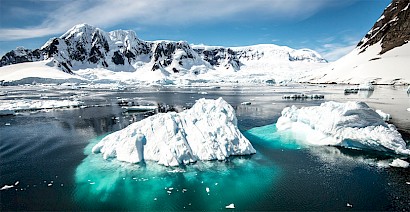Stronger El Niño events may speed up irreversible melting of Antarctic ice, research finds
 Stronger El Niño events due to global heating may accelerate irreversible melting of the Antarctic ice sheet and ice shelves and the rise in sea levels, according to research from Australia’s premier government science agency.
Stronger El Niño events due to global heating may accelerate irreversible melting of the Antarctic ice sheet and ice shelves and the rise in sea levels, according to research from Australia’s premier government science agency.
Previous studies have found that rising atmospheric greenhouse gas concentrations are expected to increase the magnitude of the El Niño Southern Oscillation (Enso), the planet’s most significant year-to-year climate fluctuation and a major driver of extreme droughts and floods. Extreme warm El Niño events and cool La Niña events are expected to become more frequent as the planet heats.
Relatively little has been known about the impact of Enso changes in Antarctica. A new study published this week in the journal Nature Climate Change led by CSIRO researchers found stronger El Niño events were likely to have divergent impacts in the ocean surrounding the southern continent.
The examination of 31 climate models found stronger El Niños may accelerate the heating of deeper ocean waters while slowing the pace of warming on the surface as westerly winds along the continental shelf become less intense.
The chief research scientist at CSIRO and the study’s lead author, Dr Wenju Cai, said the former would lead to the ice sheet and ice shelves melting faster. The study did not look at how much more rapidly melting may occur.
The Antarctic ice sheet is estimated to contain about 30m cubic kilometres of ice, enough to raise the global sea level by 70m over centuries if completely melted. A separate recent study estimated that global temperatures 1C above pre-industrial levels – a point already passed – would be enough to gradually collapse the West Antarctic ice sheet, leading to four metres of sea level rise.
“This new research shows that stronger El Niños may speed up warming of deep waters in the Antarctic shelf, making ice shelves and ice sheets melt faster,” Cai said. “Our modelling also revealed that warming around the edges of floating sea ice is slowed during this process, slowing down the melting of sea ice near the surface.”
Cai said the results suggested stronger El Niños could have a “double whammy” effect as it would lead to worsening extreme weather – heat, drought and bushfire risk in eastern Australia and floods in California, Peru and Chile – and accelerate sea level rise, causing more extreme coastal inundation.
Dr Ariaan Purich, from Monash University’s School of Earth Atmosphere and Environment and a report co-author, said the results could have broad implications for the global climate system.
“Continuing to understand how Enso will respond to climate change is a critical area of climate research,” she said. “There is still a lot more we need to understand about processes influencing shelf temperatures, and the finding is an important piece of the puzzle.”
The director of the Australian Centre for Excellence in Antarctic Science, Prof Matt King, said it was a “serious and concerning piece of work” by well regarded scientists, and more “bad news” on Antarctica’s potential contribution to sea level rise.
“There are a lot of uncertainties in terms of the future of Enso and this is another one to worry about,” he said.
A modelling study last year suggested stronger El Niño and La Niña events due to global heating may be detectable in the eastern Pacific Ocean by 2030, decades earlier than previously expected.
Sea ice around Antarctica hit a record low this year, with scientists reporting “never having seen such an extreme situation before”. Changes in sea ice melting do not directly affect sea levels but scientists says its loss exposes ice sheets and glaciers to waves, accelerating their disintegration.
You can return to the main Market News page, or press the Back button on your browser.

